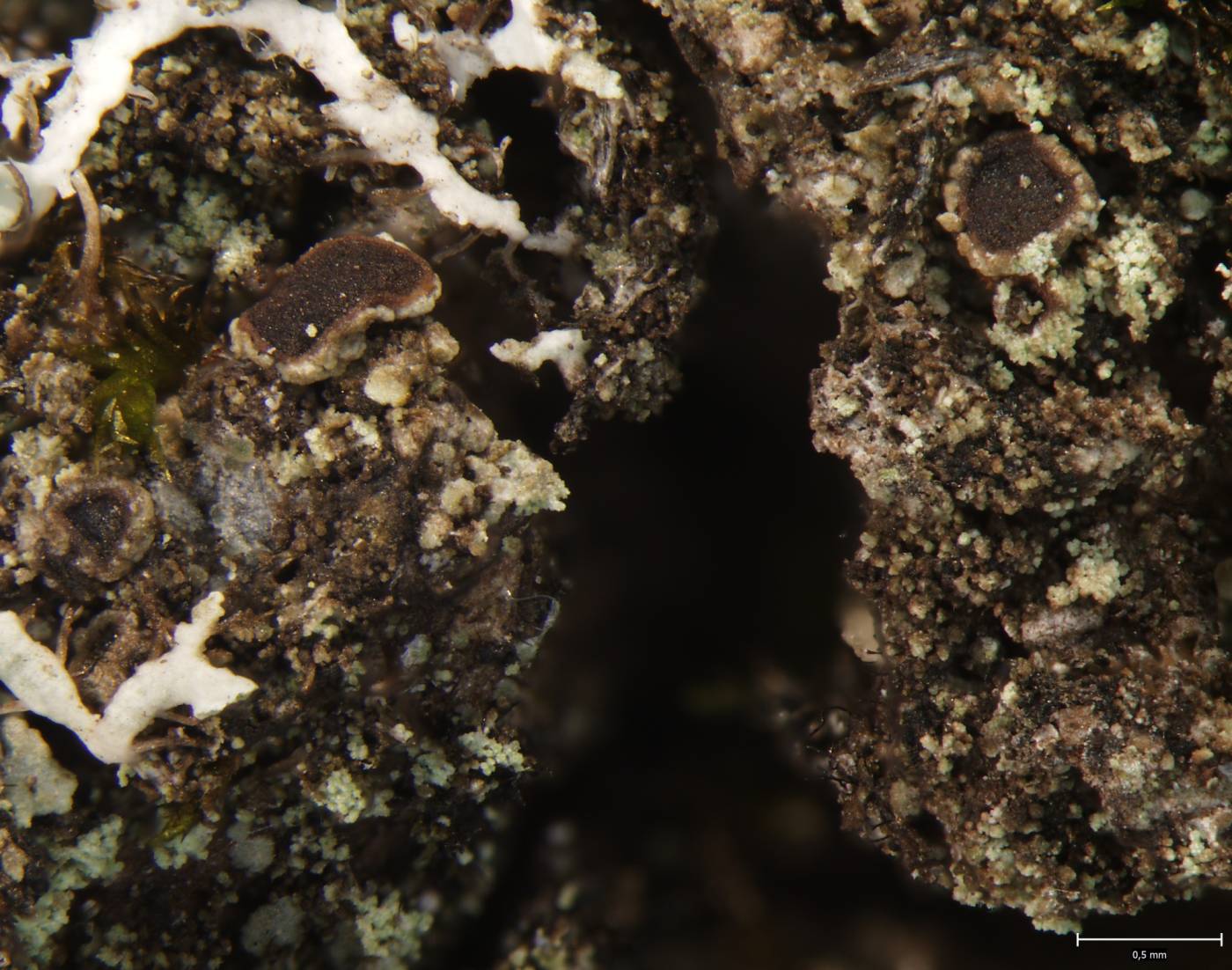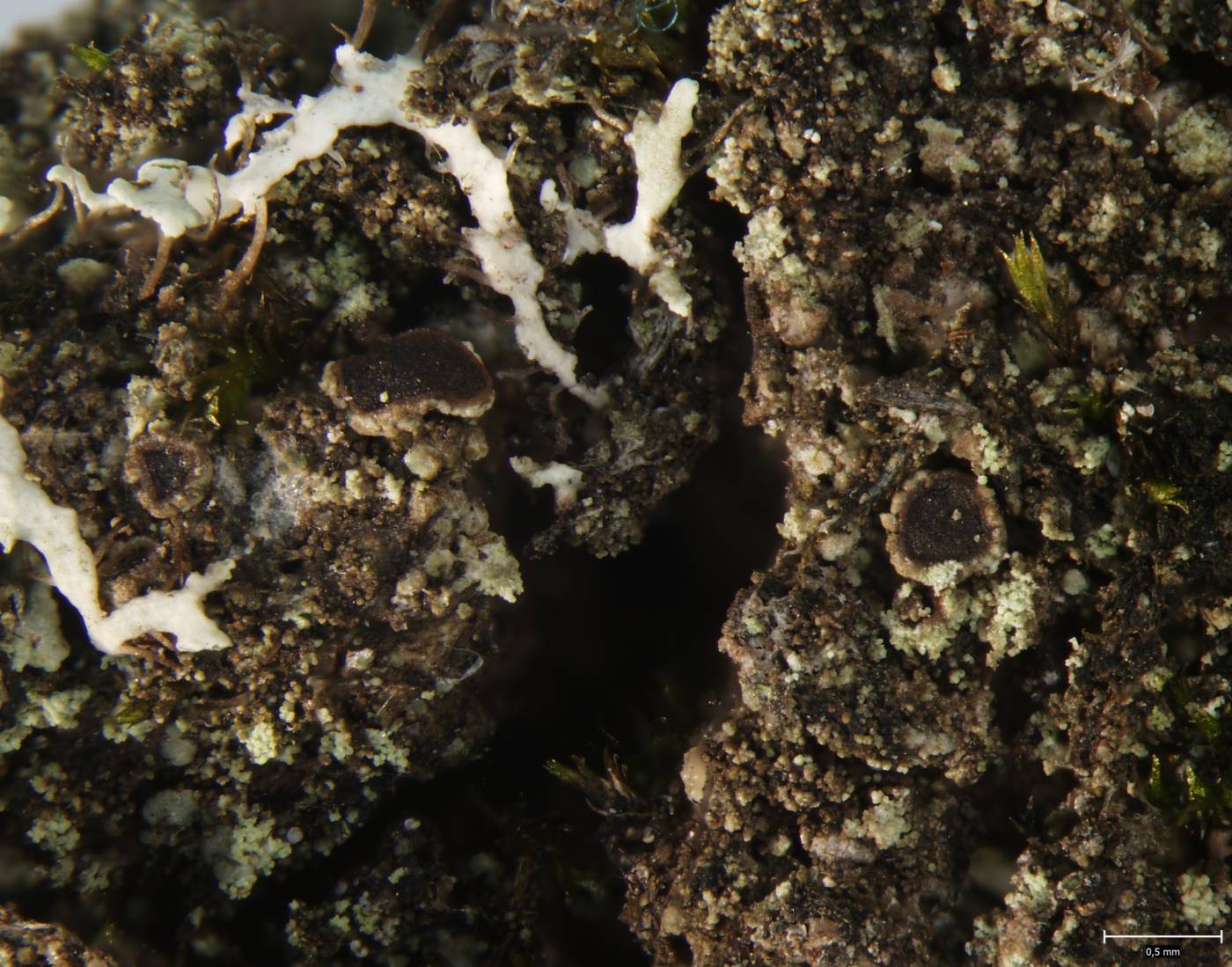An inconspicuous blastidiate Rinodina often forming extensive crusts on mossy bark. It is similar to some blastidiate species of Caloplaca or Rinodina but it is well-distinguished by negative thallus reactions (it does not contain atranorin or pannarin). If fertile, it produces Pachysporaria type spores.
The species was described from a single locality in Austria (Giralt et al. 1993) as an epiphyte on a trunk of Salix alba. Later, it was only found in the western part of North America (Sheard 2010). In Europe, the lichen is obviously very rare. In the Czech Republic, it has been found in four localities in the Křivoklát (Týřov) and Middle Vltava regions, in thermophilic oak forests.
Literature: Giralt M., Obermayer W. & Mayrhofer H. (1993): Rinodina poeltiana spec. nova (lichenized Ascomycetes, Physciaceae), a new corticolous blastidiate species from Austria. – Herzogia 9: 709–714. Sheard J.W. (2010): The lichen genus Rinodina (Ach.) Gray (Lecanoromycetidae, Physciaceae) in North America, north of Mexico. – NRC Research Press, Ottawa.
taxonomic classification:Ascomycota → Lecanoromycetes → Caliciales → Physciaceae → Rinodina
Red List (Malíček 2023):DD – data deficient
Occurrence in the Czech Republic
All records: 11, confirmed 8. One click on a selected square displays particular record(s), including their source(s).

